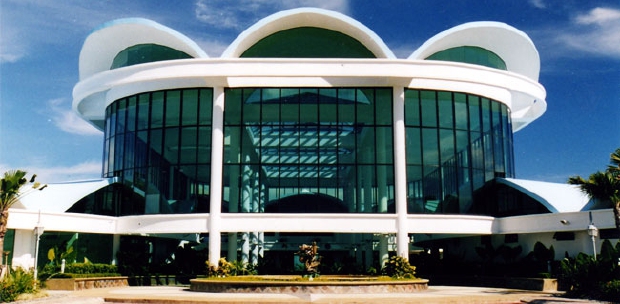THE British Museum's website tells us that only one per cent of its holdings are on display.
Simple arithmetic tells us 99 per cent are not on display. Greed?
Arrogance? The lingering colonial nonchalance?
Dan Hicks, the author of the book, Brutish Museums (2020), has called for the return of stolen and sacred objects from the British Museum — the curated spoils of empire.
Branding itself as a universal museum, displaying human history and universal values, it establishes and operates by plunder.
Lydia Wilson, culture editor of New Lines Magazine, experienced a constant tug of war with emotions when she visited the British Museum.
Known for obtaining objects through force or deceit, it has long been a staunch opponent of demands for repatriation of objects. It has offered more or less disingenuous reasons.
In its August issue, she tells, she went to the British Museum recently to wander around its extensive and beautiful collections.
"But this time was different. I was seeing this familiar building with newly critical eyes after reading about the artifacts on display — thinking about both how they were acquired and how their positions continue to shape perceptions of the cultures they represent, often far away from this imposing building in central London".
Her thoughts were not exactly new, "but had been sharpened by an increasing amount of criticism and calls to return sacred and looted objects, calls that are being resolutely ignored by the trustees of the museum, who are backing themselves into increasingly untenable positions".
She went there to explore the issues, asking such questions as would returning such objects really signal the end of such huge collections?
Or "can my positive experiences of the British Museum as a place of wonder be rescued and shared with the world — by sharing the plunder?"
She walked down the stairs to the African room, a surprisingly small space for representing such a large continent, especially given the size of the museum.
She turned into a room where the whole of the far wall is taken up with plaques, set in a grid from floor to ceiling.
There is a bench in front of them, a reflection of how much there is to absorb, from the craft of casting bronze and brass to the artistry, to the content of complex scenes of human interaction.
Her eyes were drawn to a cat at the top, "cocking its head in a pose instantly recognisable to any cat owner, and down to the variety of human forms, dress and poses portrayed".
She was confronted with the Benin Bronzes, the subject of numerous books in recent years, such as Hicks'; Blood and Bronze, by Paddy Docherty; and Loot by Barnaby Phillips, and numerous recent reportage in the media.
Wilson says the titles alone give the flavour of how the objects were acquired.
"I've read them and others, so it's a struggle to separate my knowledge of the violence and lies of the colonial campaign (in what is now Nigeria) that led to their presence in front of me from the aesthetic appreciation of these beautiful objects."
The objects at the museum — and I often wondered how they managed to bring in huge Mesopotamian and Assyrian artifacts — are a showcase of many civilisations across the globe. The collections are awesome.
It is, from my many visits to the museum in recent years, emotionally and intellectually disturbing. A painful celebration of human history in the name of universality.
It is open knowledge that the holdings are mostly the result of British colonialism, and "therefore violence, whether real or potential, is the backdrop to many of the objects on display or held in the warren of storage rooms".
Wilson raises the morality of housing such a huge collection of the world's heritage in one country.
Can the intellectual value of housing so many cultures side by side ever outweigh the damage done, and in any case, can such damage ever be undone?
If so, perhaps in a Malaysian public museum (there is a private colonial museum in Penang) — representing British colonial history.
But then, are almost all public museums in Malaysia, framed within the colonial narrative, quite out of context?
The writer is professor of social and intellectual history, International Institute of Islamic Thought and Civilisation, International Islamic University Malaysia





